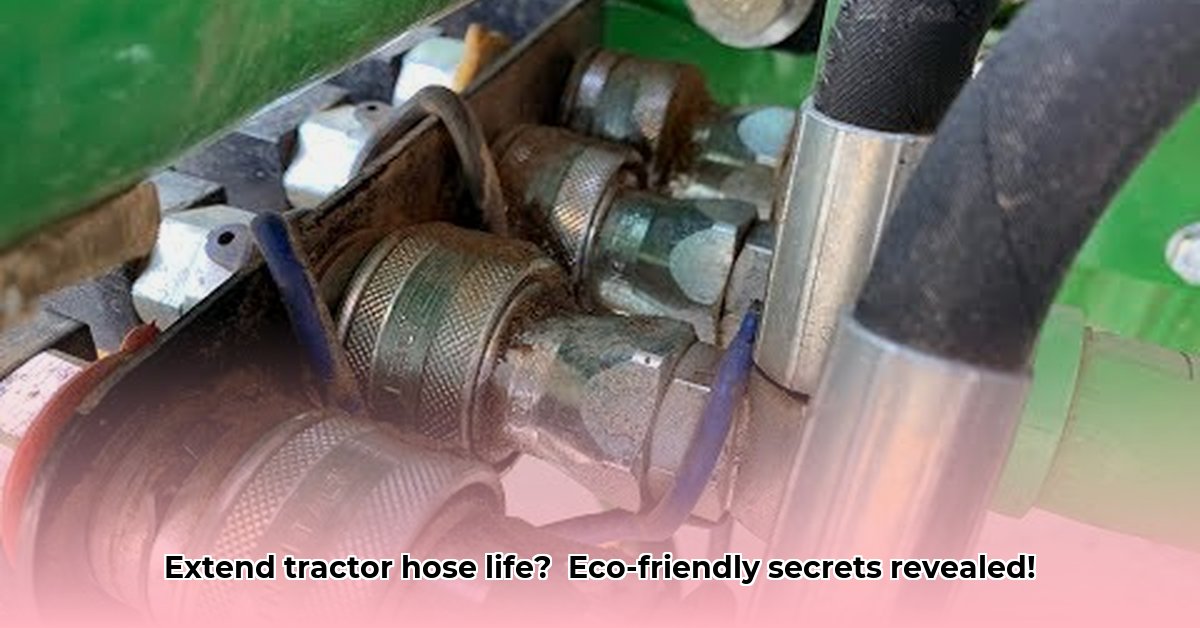
Tractor Hydraulic Hoses and Fittings: A Farmer's Guide to Longevity and Sustainability
Keeping your tractor's hydraulic system running smoothly is crucial for efficient farming. This system powers numerous operations, relying on hoses and fittings to deliver pressurized fluid. Understanding these components and their maintenance is key to maximizing equipment lifespan and minimizing environmental impact. This guide provides actionable steps to extend the life of your tractor's hydraulic hoses and fittings while promoting sustainable practices. For more information on hydraulic fittings, check out this helpful resource: tractor supply fittings.
Understanding the Hydraulic Heart of Your Tractor
Your tractor's hydraulic system is analogous to your body's circulatory system. Hydraulic fluid is pumped through a network of hoses and fittings, providing the power for various functions. Leaks or failures in this system result in lost power and costly repairs. Proactive maintenance of hoses and fittings is crucial to prevent downtime. Isn't preventing costly repairs a worthwhile goal for every farmer?
Choosing the Right Fittings: A Step-by-Step Guide
Selecting appropriate fittings is paramount for the long-term health of your hydraulic system. Several factors influence this choice.
1. Pressure Considerations: Determine your tractor's maximum hydraulic system pressure (found in your owner's manual). Select fittings with a pressure rating significantly exceeding this value. This ensures safety and prevents catastrophic failures. Underestimating pressure ratings can lead to leaks and costly repairs — a risk no farmer wants to take.
2. Material Selection: The fitting material directly impacts durability, corrosion resistance, and environmental impact.
| Material | Advantages | Disadvantages | Sustainability Considerations |
|---|---|---|---|
| Steel | High strength, cost-effective | Susceptible to rust and corrosion | Recyclable; consider the sourcing and manufacturing processes |
| Stainless Steel | Excellent corrosion resistance, durable | Higher cost | Highly recyclable; consider manufacturing processes |
| Brass | Good corrosion resistance, machinability | Softer than steel, less durable | Recyclable, but lower percentage of recycled brass available |
| Bio-based Materials | Renewable source, reduced carbon footprint | Often newer technology, potentially less durable | Check for certifications and end-of-life options |
The optimal material choice depends on your budget, system demands, and environmental considerations. What material best balances cost, durability, and environmental responsibility for your operation?
3. Connection Types: Various connection types exist (JIC, ORB, BSP, etc.). Consult your tractor's manual or a hydraulic parts supplier to ensure compatibility. Incorrect fittings lead to leaks and improper function. Choosing the correct fitting is as crucial as selecting the right seed for your crop.
4. Preventative Maintenance: Regular inspection is critical. Look for cracks, corrosion, or leaks. Tighten loose fittings and replace damaged components immediately. Preventative maintenance minimizes downtime and extends component lifespan. Do you regularly inspect your fittings, or only when a problem arises?
Sustainability in Action: Eco-Friendly Practices
Sustainable practices extend beyond crop selection. Consider the environmental impact of your hydraulic system:
Material Sourcing: Prioritize fittings made from recycled materials to reduce resource consumption.
Responsible Disposal: Dispose of old fittings responsibly. Many materials are recyclable.
Lifecycle Assessment: While complex, choosing durable components reduces the need for frequent replacements, minimizing long-term environmental impact.
Troubleshooting Common Issues
Leaks: Check all connections for tightness. Replace damaged components. A seemingly small leak can lead to significant fluid loss and potential damage.
Sluggish Operation: Check fluid levels and the filter. Replace the filter if necessary.
Resources and Further Reading
Consult your tractor's manual, your local agricultural extension service, and reputable equipment suppliers for further guidance.